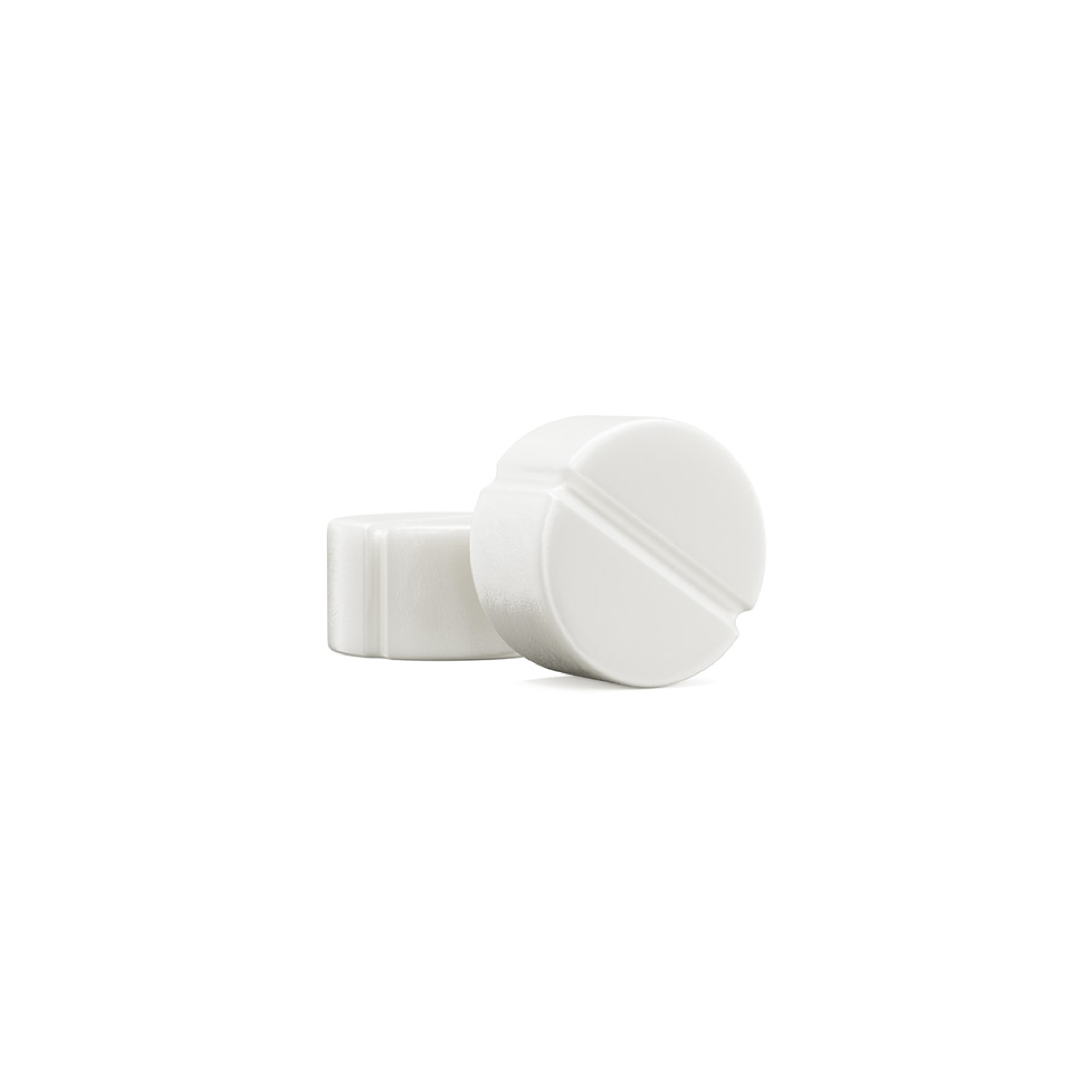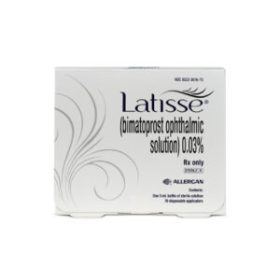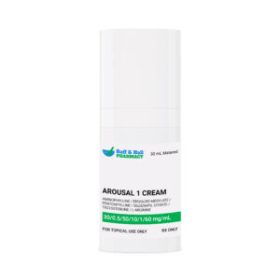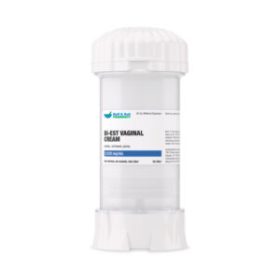Testosterone Troche (Each)
Cells in the testis, ovary, and adrenal cortex generate endogenous testosterone. Therapy uses testosterone in the treatment of hypogonadism—acquired or congenital. For palliative therapy of breast carcinoma in postmenopausal women, testosterone is also the most potent external androgen. Approved by the FDA in 1939, testosterone was being utilized in 1938. Anabolic steroids—derivatives of testosterone—used illegally are now regulated narcotics. Like many anabolic steroids, testosterone was designated in 1991 as a controlled substance. Developed in the United States by Uniumed Pharmaceuticals as AndroGel, testosterone cream For the treatment of testosterone insufficiency, which usually causes a range of hypogonadic symptoms from mood and energy to sexual disorders as well as a medication for a range of injury-related diseases like those of those of severe burns and car accident victims. AndroGel, a widely used kind of testosterone, is available all around under several, less well known brand/trade names including Testogel (produced in Testim (made in the U.S.
Targeting the same or at least very similar body areas as injections and other types of testosterone, the testosterone cream transdermal delivery system More precisely, maximum testosterone cream absorption is attained when it is applied to heavily muscled body areas as with injectable testosterone. Because more muscle at the point of application means more testosterone absorbing capillaries, testosterone can be more quickly transferred into the bloodstream.
Sexual maturation at all stages of life depends on endogenous testosterone. It is made from cholesterol synthetically. Male growth starts in the fetus and is most important throughout puberty; however, it still has a significant part in the adult guy. Maintaining male sexuality requires insufficient androgens secreted by the adrenal cortex.
By a negative feedback mechanism, elevated androgen plasma levels stifle gonadotropin-releasing hormone, luteinizing hormone, and follicle-stimulating hormone (decreasing endogenous testosterone). Moreover influencing erythropoietin generation, calcium balance, and blood sugar is testosterone. High lipid solubility allows androgens to quickly penetrate target tissue cells. Testosterone undergoes enzymatic conversion inside the cells to 5alphadihydrotestosterone, then interacts loosely with cystolic receptors. Androgen action stems from the onset of transcription and nuclear cellular alterations induced by this steroid-receptor complex.
Typically, endogenous androgens excite RNA polymerase, which in turn boosts protein synthesis. Normal male sexual development, including growth and maturation, depend on these proteins. of the scrotum, penis, seminal vesicle, and prostate. Androgens during puberty cause a rapid growth and development of muscle along with body fat rearrangement. Deepening the voice, changes also occur in the larynx and vocal cords. Normal male development and development require the use of exogenous androgens when endogenous androgens are absent.
Important Things to Tell Your Doctor Before Starting Testosterone
Make sure your healthcare provider knows if you have any of these conditions:
Breast cancer
Breathing problems during sleep (like sleep apnea)
Diabetes
Heart disease
Kidney or liver problems
Lung disease
Prostate issues (cancer or enlargement)
Allergic reactions to testosterone or similar products
If you are pregnant or breastfeeding
Your doctor will also want to do regular blood tests while you’re on testosterone to monitor your health.
Safety Notes for Athletes and Use of Topical Testosterone
Testosterone is banned by most sports organizations.
Topical gels and solutions (creams or gels applied to the skin) can catch fire easily, so avoid open flames, smoking, or heat sources near the application site.
Who Should Avoid Testosterone?
Men with prostate or breast cancer should not use testosterone because it can make these cancers grow.
Men with enlarged prostate should use testosterone carefully, as it might worsen symptoms or increase cancer risk.
Older men with age-related low testosterone (andropause) usually should not use testosterone because safety and benefits aren’t well established.
People with liver or kidney problems should use testosterone cautiously because it can cause fluid retention and worsen these conditions.
Testosterone might increase the risk of heart problems, especially in men with existing heart disease. Some studies suggest a higher chance of heart attacks or strokes, but the FDA is still reviewing the evidence.
Other Health Considerations
Testosterone can worsen sleep apnea, especially in people who are overweight or have lung disease.
High doses can cause too many red blood cells (polycythemia), so your doctor will check your blood regularly.
Testosterone should never be used during pregnancy because it can harm the baby.
Women should not use testosterone because it can cause unwanted male characteristics like deepening voice, excess hair growth, and menstrual changes.
Women and children should avoid contact with testosterone gels or creams applied to men, as accidental exposure can cause side effects like early puberty or changes in genitalia in children.
Special Warnings About Accidental Exposure
Accidental exposure in children has caused symptoms like early puberty and behavior changes, but these usually improve after stopping exposure.
Use During Breastfeeding
Testosterone is not recommended for breastfeeding women because it may harm the baby or interfere with milk production.
Diabetes and Bone Health
Testosterone can affect blood sugar control, so people with diabetes should monitor their levels closely.
It can also affect bone growth, so children and teens should use it only under strict medical supervision.
Injection-Specific Warnings
Some testosterone injections (like testosterone undecanoate) can cause serious reactions like coughing, chest pain, dizziness, or fainting right after the shot.
After injection, patients should be monitored for at least 30 minutes for any serious reactions.
Because of these risks, some testosterone injections are only available through special programs that ensure safe use.
Nasal Testosterone
Nasal sprays of testosterone are not recommended for people with recent nasal injuries, surgeries, or chronic nasal conditions.
Nasal congestion or allergies can reduce how well the nasal testosterone works.
Use in Children and Teens
Testosterone can speed up bone growth but may stop height growth early, so it must be used carefully in young people.
Accidental exposure to testosterone gels in children has caused early puberty signs, which usually improve after stopping exposure.
Among possible interactions are: specific diabetic medications; particular drugs used to treat or prevent blood clots like warfarin; oxyphenbutazone; propranolol; steroid drugs like prednisone or cortisone. Not every conceivable interaction is included on this list.
NOTE: Hepatic cytochrome P450 (CYP) 3A4 isoenzyme substrate is testosterone. Additionally both a Pglycoprotein transport facilitator and inhibitor, testosterone is
Testosterone can augment warfarin’s anticoagulant activity. In a few individuals with this drug-drug interaction, severe bleeding has been noted. Though the process is unknown, testosterone can lower procoagulant elements. Reduction of warfarin dosage may be needed if testosterone therapy is given concurrently. Patients using such oral anticoagulants should have INR and prothrombin time monitored more frequently, particularly at the start and cessation of androgen treatment.[9] It is unknown whether testosterone enhances the anticoagulant response to heparin treatment or whether testosterone changes the impact of other noncoumarin oral anticoagulants in a similar way.
Based on case reports with methyltestosterone and danazol, androgens may raise cyclosporine plasma levels, therefore increasing nephrotoxicity risk.
Administration of testoterone and steroids may elevate the risk of edema, notably in those with underlying cardiac or hepatic illness. Higher mineralocorticoid activity corticosteroids, such fludrocortisone, could be more prone to edema. Combine these medications carefully.
Goserelin25 and leuprolide26 suppress steroidogenesis. Relatively prohibited and would run counter to goserelin or leuprolide treatment, simultaneous use of androgens with goserelin or leuprolide defeats the goal of the drug.
Androgens may raise the risk of hepatotoxicity; therefore, they should be used with caution when taken together with other hepatotoxic drugs. Particularly those with a history of liver illness, patients should be closely watched for symptoms of liver damage.
Though excess dosages of androgens in prepubescent boys can quicken epiphyseal maturation, androgens might be required to help human growth hormone’s response.
Though erythropoietin is reduced in individuals with chronic renal failure, androgens stimulate erythropoiesis; other tissues besides the Though in little quantities, kidney can produce erythropoietin. Concurrent administration of androgens can increase the patient’s response to epoetin alfa, so lowering the amount necessary to treat anemia. If at all possible, this drug combination should be avoided as unfavorable effects have been linked with an abrupt increase in blood viscosity. Further assessment of this mix is needed.
versible with discontinuation
Suppression of endogenous testosterone → decreased LH/FSH → oligospermia or infertility at high doses
Libido changes: both increases and decreases reported
Priapism/erectile dysfunction: rare, usually dose-related
2. Prostate and Genitourinary
Benign prostatic hyperplasia (BPH): 1% (Testim), 3–5% (Androgel)
Elevated PSA: 1–6% depending on formulation (Axiron, Fortesta, Natesto)
Prostate cancer risk: limited signals; some biopsy-confirmed cancers in long-term studies
Other GU effects: nocturia, hesitancy, incontinence, dysuria, hematuria (<3%)
Epididymitis: rare, requires withdrawal
3. Women and Pregnancy
Virilization: acne, hirsutism, deepened voice, clitoral enlargement, amenorrhea/oligomenorrhea
Fetal risk: teratogenic; fetal virilization possible if exposed during pregnancy
Recommendation: strict avoidance of exposure (especially from topical gels/solutions in male partners)
4. Dermatologic
Application site reactions (patches, gels, solutions):
Irritation, erythema, blistering, folliculitis, pruritus (up to 37% with patches)
Severe cases: skin necrosis, ulceration (rare)
Acne/seborrhea: 1–8%
Alopecia: male-pattern baldness with prolonged therapy
Contact dermatitis: 2–4% with gels
Hyperhidrosis: ~1–2%
5. Cardiovascular and Renal
Edema & fluid retention: higher risk with heart or renal disease
Hypertension: 1–3% (gels/solutions)
Cardiovascular risk:
Observational studies suggest ↑ MI and stroke in older men or those with pre-existing heart disease
FDA (2014) initiated review; no definitive causal link confirmed
Polycythemia/Erythrocytosis: 2–7% (dose-dependent; risk of hyperviscosity, VTE)
Thromboembolism: DVT and PE reported → discontinue if suspected
6. Hepatic
Mild enzyme elevations: possible with therapeutic doses
Serious hepatotoxicity: more with 17-α-alkylated androgens (methyltestosterone, anabolic steroid abuse)
Peliosis hepatis, hepatic neoplasms (rare but life-threatening)
7. Neurologic and Psychiatric
Headache: 1–6%
Mood alterations: depression, anxiety, irritability, hostility (<3%)
Sleep disturbances: abnormal dreams, insomnia (≤1–2%)
Hot flashes/flushing: ~1%
Confusion, nervousness: <3%
8. Musculoskeletal & Metabolic
Premature epiphyseal closure in prepubertal boys → stunted growth
Bone changes: reports of osteolysis, osteopenia, osteoporosis
Lipid effects: ↓ HDL, ↑ LDL and TGs; caution in dyslipidemia
Hypercalcemia: esp. in immobile or cancer patients
9. Hematologic
Increased erythropoiesis → erythrocytosis, polycythemia
10. Respiratory
Intranasal formulations (Natesto):
Nasopharyngitis, rhinorrhea, epistaxis, nasal irritation (3–9%)
Sleep apnea: risk increased in obese or chronic lung disease patients
Injection-related pulmonary oil microembolism (POME):
Seen with testosterone undecanoate (Aveed) → REMS program restriction
11. Miscellaneous
GI upset: diarrhea, vomiting (3–4%)
Dental/gum issues: with buccal system (up to 9%)
Rare allergic reactions: rash, hives, angioedema, anaphylaxis (especially with injectable forms)
Probable negative effects on the fetus (FDA pregnancy risk category X) cause testosterone to be contraindicated during pregnancy. Women of childbearing age receiving Treatments with testosterone should include sufficient birth control. Since testosterone is not consumed during pregnancy, there should be no specific need to give the treatments to women during labor or obstetrical birth; safety concerns and effectiveness in these contexts has not been proven.
It is unknown whether exposure would raise above levels commonly found in human milk; the distribution of testosterone into breast milk has not been established. Significant exposure to this androgen through nursing can have detrimental androgenic effects on the baby and the medicine might also impair correct establishment of lactation in the mother. Traditionally, testosterone/androgens have been employed peripherally to stop lactation. Lactating women getting testosterone medication are urged to use alternative ways of nursing.
Store this medication in its original container at 68°F to 77°F (20°C to 25°C) and away from heat, moisture and light. Keep all medicine out of the reach of children. Throw away any unused medicine after the beyond-use date. Do not flush unused medications or pour down a sink or drain.
- DELATESTRYL (Testosterone Enanthate Injection, USP) package insert. Lexington, MA: Indevus Pharmaceuticals, Inc.; 2007 July.
- Axiron (testosterone) topical solution, package insert. Indianapolis, IN: Lilly USA, LLC; 2011 Dec.
- The American Geriatrics Society 2012 Beers Criteria Update Expert Panel. American Geriatrics Society updated Beers Criteria for potentially inappropriate medication use in older adults. J Am Geriatr Soc 2012;60:616-31.
- Vigen R, O’Donnell CI, Baron AE, et al. Association of testosterone therapy with mortality, myocardial infarction, and stroke in men with low testosterone levels. JAMA. 2013;310:1829-1836.
- WD Finkle, S Greenland, GK Ridgeway, et al. Increased Risk of Non-Fatal Myocardial Infarction Following Testosterone Therapy Prescription in Men. DOI: 10.1371/journal.pone.0085805
- FDA Medwatch – FDA evaluating risk of stroke, heart attack and death with FDA-approved testosterone products. Retrieved January 31, 2014. Available on the World Wide Web https://www.fda.gov/Drugs/DrugSafety/ucm383904.htm– LinkOpens in New Tab
- Natesto (testosterone) nasal gel package insert. Durants, Christ Church Barbados: Trimel BioPharma SRL; 2014 May.
- (testosterone gel) package insert. Malvern, PA: Auxilium Pharmaceuticals, Inc.; 2010 Apr.
- Androderm (testosterone transdermal system) package insert. Corona, CA: Watson Pharma, Inc.; 2014 Jun.
- Androgel (testosterone gel) package insert. Marietta, GA: Solvay Pharmaceuticals, Inc.; 2012 Sept.
- Striant (testosterone buccal system) package insert. Livingston, NJ: Columbia Laboratories, Inc.; 2014 Mar.
- Fortesta (testosterone) gel, package insert. Chadds Ford, PA: Endo Pharmaceuticals Inc.; 2010 Dec.
- Aveed (testosterone undecanoate Injection) package insert. Malvern, PA: Endo Pharmaceuticals Solutions Inc.; 2014 Mar.
- DEPO-TESTOSTERONE (testosterone cypionate) injection, package insert. New York, NY: Pharmacia & Upjohn Co.; 2006 Sept.
- Kochenour NK. Lactation suppression. Clin Obstet Gynecol. 1980;23:1045-1059.
- Testim (testosterone gel) package insert. Malvern, PA: Auxilium Pharmaceuticals, Inc.; 2010 Apr.
- Krauser JA, Guengerich FP. Cytochrome P450 3A4-catalyzed testosterone 6beta-hydroxylation stereochemistry, kinetic deuterium isotope effects, and rate-limiting steps. J Biol Chem 2005;280:19496—506.
- Barnes KM, Dickstein B, Cutler GB Jr, et al. Steroid transport, accumulation, and antagonism of P-glycoprotein in multidrug-resistant cells. Biochemistry 1996;35:4820—7.
- Wells PS, Holbrook AM, Crowther NR et al. Interaction of warfarin with drugs and food. Ann Intern Med 1994;121:676—83.
- Goffin E, Pirson Y, Geubel A, et al. Cyclosporine-methyltestosterone interaction. Nephron 1991;59:174—5.
- Borras-Blasco J, Rosique-Robles JD, Peris-Marti J, et al. Possible cyclosporin-danazol interaction in a patient with aplastic anaemia. Am J Hematol 1999;62:63—4.
- Moller BB, Ekelund B. Toxicity of cyclosporine during treatment with androgens. N Engl J Med 1985;313:1416.
- Ross WB, Roberts D, Griffin PJ, et al. Cyclosporin interaction with danazol and norethisterone. Lancet 1986;1:330.
- Androgel® (testosterone gel) package insert. Montrogue, France: Laboratories Besins International; 2005 Aug.
- Zoladex® (goserelin acetate) package insert. Wilmington, DE: AstraZeneca Pharmaceuticals LP; 2003 Dec.
- Viadur® (leuprolide implant) package insert. Westhaven, CT: Bayer Pharmaceuticals; 2002 May.
- Humatrope™ (somatropin);package insert. Indianapolis, IN: Eli Lilly and Company; 2003 Jul.
- Androderm® (testosterone transdermal system) package insert. Corona, CA: Watson Pharma, Inc.; 1999 Jan.
- Propecia® (finasteride) package insert. Whitehouse Station, NJ: Merck & Co., INC.; 2003 Oct.
- Avodart™ (dutasteride) package insert. Research Triangle Park, NC: GlaxoSmithKline; 2005 May.
- Robbers JE, Tyler VE. Tyler’s Herbs of Choice: the Therapeutic Use of Phytomedicinals. Binghamton NY: Haworth Herbal Press, Inc.; 1999.
- German Commission E. Saw Palmetto berry, Sabal fructus, monograph Published March 2, 1989 and revised January 17, 1991. In: Blumenthal, M et al ., eds. The complete German Commission E Monographs -Therapeutic Guide to Alternative Medicines. Bosto
- Lazar JD, Wilner KD. Drug interactions with fluconazole. Rev Infect Dis 1990;12:S327—33.
- Hansten P, Horn J. The Top 100 Drug Interactions: A Guide to Patient Management. includes table of CYP450 and drug transporter substrates and modifiers (appendices). H & H Publications, LLP 2014 edition.
- Boyanov MA, Boneva Z, Christov VG. Testosterone supplementation in men with type 2 diabetes, visceral obesity, and partial androgen deficiency. Aging Male 2003;6:1—7.
- Kapoor D, Goodwin E, Channer KS, et al. Testosterone replacement therapy improves insulin resistance, glycaemic control, visceral adiposity, and hypercholesterolaemia in hypogonadal men with type 2 diabetes. Eur J Clin Endocrinol 2006; 154:899—90
- Hobbs CJ, Jones RE, Plymate SR. Nandrolone, a 19-nortestosterone, enhances insulin-independent glucose uptake in normal men. J Clin Endocrinol Metab 1996; 81:1582—5.
- Corrales JJ, Burgo RM, Garcia-Berrocal B, et al. Partial androgen deficiency in aging type 2 diabetic men and its relationship to glycemic control. Metabolism 2004;53:666—72
- Lee CH, Kuo SW, Hung YJ, et al. The effect of testosterone supplement on insulin sensitivity, glucose effectiveness, and acute insulin response after glucose load in male type 2 diabetics. Endocrine Res 2005;31:139—148.
- Cohen JC, Hickman R. Insulin resistance and diminished glucose tolerance in powerlifters ingesting anabolic steroids. J Clin Endocrinol Metab 1987;64:960—3.
- Aldercreutz H, Mazur W. Phyto-estrogens and western diseases. Annals of Medicine 1997;29:95—120.
- Ranexa (ranolazine extended-release tablets) package insert. Foster City, CA: Gilead Sciences, Inc. 2013 Dec.
- Letairis™ (ambrisentan) package insert. Foster City, CA: Gilead Sciences, Inc; 2008 Oct.
- Pradaxa (dabigatran) package insert. Ridgefield, CT: Boehringer Ingelheim Pharmaceuticals, Inc.; 2015 Jan.
- Gilotrif (afatinib) package insert. Ridgefield, CT: Boehringer Ingelheim Pharmaceuticals, Inc; 2013 Nov.
- Androgel 1.62% (testosterone gel) package insert. North Chicago, IL: Abbott Laboratories; 2014 Nov.
- Naik BS, Shetty N, Maben EVS. Drug-induced taste disorders. European Journal of Internal Medicine 2010; 21:240-243.





